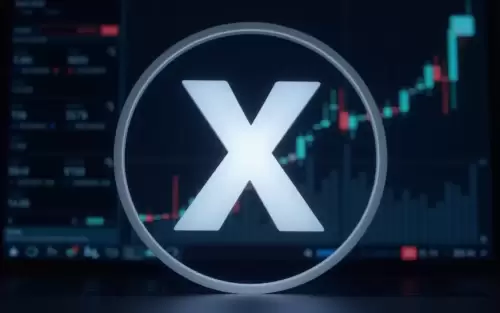 |
|
 |
|
 |
|
 |
|
 |
|
 |
|
 |
|
 |
|
 |
|
 |
|
 |
|
 |
|
 |
|
 |
|
 |
|
Cryptocurrency News Articles
Crypto, CeFi, and Trust Gaps: Navigating the Digital Frontier in 2025
Aug 05, 2025 at 03:34 pm
In 2025, the crypto landscape faces trust gaps in CeFi, despite innovations like PayPal's crypto integration. Balancing innovation with robust user protection remains key.

Alright, folks, let’s dive into the wild world of crypto, CeFi, and those pesky trust gaps that just won't seem to disappear. It's 2025, and while we're seeing some cool innovations, the core issues of trust and security in centralized crypto exchanges (CeFi) are still front and center.
The Lingering Trust Deficit in CeFi
Despite CeFi's pivotal role in crypto trading, platforms like OKX, KuCoin, Binance, and Bybit continue to grapple with significant challenges. A recent report by CryptoEdu highlights some systemic problems that are hindering trust among both retail and institutional investors. We're talking about opaque token listings, governance theater, and arbitration clauses that basically leave retail users high and dry when legal recourse is needed.
According to the report, these platforms need serious reforms, including enforceable listing criteria, standardized crisis response protocols, structural user protections, and independent oversight mechanisms. It's like they're building a skyscraper on a foundation of sand – impressive, but not exactly confidence-inspiring.
PayPal's Crypto Leap: Bridging the Gap?
Now, let's switch gears to some brighter news. PayPal has officially jumped into the crypto pool with its “Pay with Crypto” feature. The goal? To make it easier for small businesses to accept payments in over 100 different cryptocurrencies. These digital payments are automatically converted into PYUSD, PayPal’s very own stablecoin, which aims to provide a seamless and cost-effective experience for everyone involved.
One of the biggest advantages here is the potential to slash international transaction fees by up to 90%. That's huge! Plus, PayPal’s service supports transactions from wallets like MetaMask and Coinbase, giving access to a massive user base of over 650 million crypto holders. It’s like opening the floodgates to a whole new world of potential customers.
Balancing Innovation and Trust
So, what’s the bottom line? While PayPal's move is undoubtedly a step in the right direction, the persistent trust issues within CeFi cannot be ignored. The crypto space needs to prioritize transparency, security, and user protection. We need to ensure that the foundation upon which these innovations are built is solid and reliable. Otherwise, we risk alienating the very users we’re trying to attract.
Personally, I think that while it is exciting to see PayPal leading the charge in the crypto payment space, a huge amount of the public are still skeptical of the tech. I hope this is not just a fad and that more companies, and governments, start to work with crypto in a safe and responsible manner. I think it is up to the existing crypto players to demonstrate that this can be a secure and beneficial technology.
Looking Ahead
In conclusion, the crypto landscape in 2025 is a mixed bag. We have innovative solutions like PayPal's crypto integration, but we also have lingering trust gaps in CeFi. The key to success will be balancing innovation with robust user protection and transparency. It’s like trying to bake a cake – you need the right ingredients and the right oven temperature to get it just right.
So, keep your eyes peeled, stay informed, and remember, the future of crypto is in our hands. Let’s make it a future we can all trust. Peace out!
Disclaimer:info@kdj.com
The information provided is not trading advice. kdj.com does not assume any responsibility for any investments made based on the information provided in this article. Cryptocurrencies are highly volatile and it is highly recommended that you invest with caution after thorough research!
If you believe that the content used on this website infringes your copyright, please contact us immediately (info@kdj.com) and we will delete it promptly.





























































